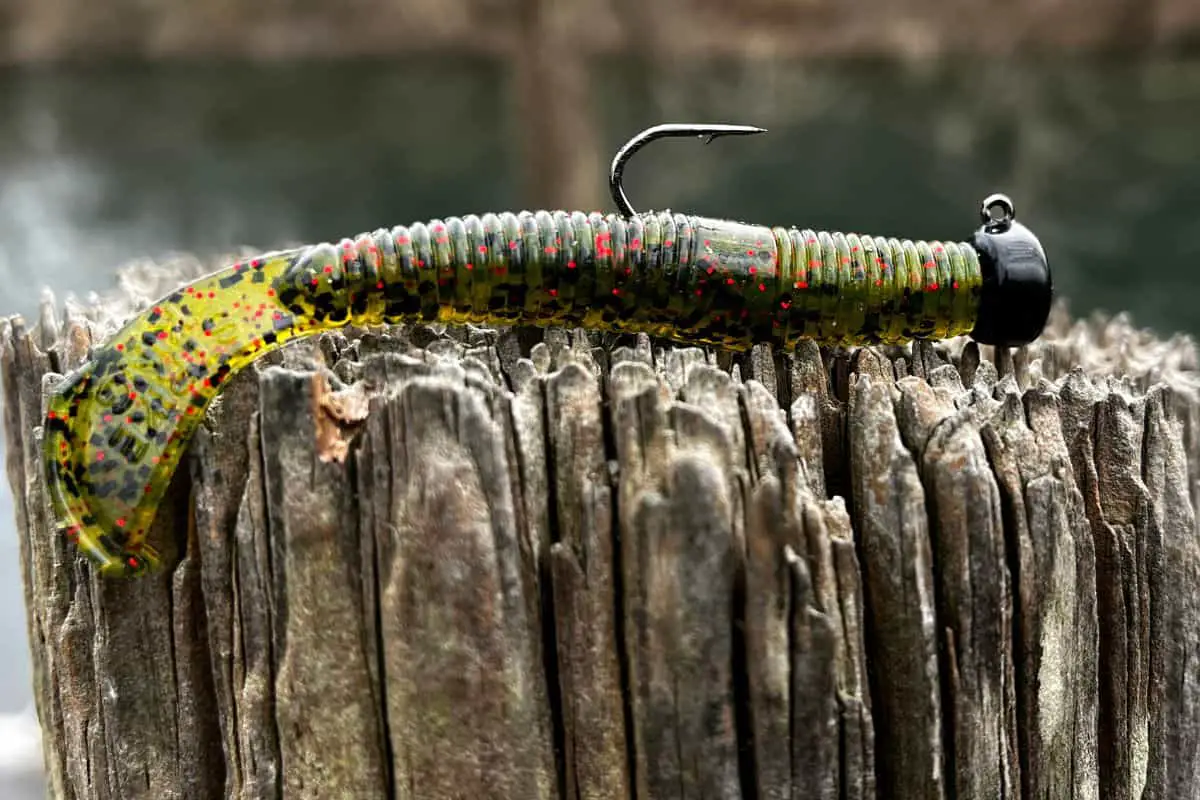Finesse lures can coax wary bass into biting when the conditions are tough, but a huge downside is the difficulty anglers have casting these small baits. The following tips will help you get the most out of your finesse presentations and be an efficient angler in the process.
To get the most distance from casting finesse lures anglers should use spinning gear with braided line. The proper casting technique will also maximize how far an angler can throw these small lures.
One of the most important considerations for bass fishing during tough conditions is distance. When finesse lures are needed this can be a problem. These lightweight lures can be difficult for anglers to cast.
Proper Gear for Casting Finesse Lures
A spinning reel with a rod that is in the 7ft – 7ft 4in range with a medium to medium-light power rating is ideal. The lighter power rating will help anglers load more energy into the rod during the casting process. The resulting “whip” is effective at launching small lures.
Beyond the rod, I firmly believe that spooling your spinning reel with a braided line is the most important factor for angler success and casting distance.
Braided line does a few important things for anglers.
First, it casts extremely smooth which means less friction. This single characteristic of the line will add considerable distance.
Braid is also much less likely to experience line twist and wind knots. The telephone cord-like twisting of monofilament and fluorocarbon line can reduce even the most powerful cast to almost nothing.
The diameter of braid is also less than mono and fluoro which reduces weight when casting as well.
I will most often spool up my spinning reels with a braid in the 8-10 lb range.
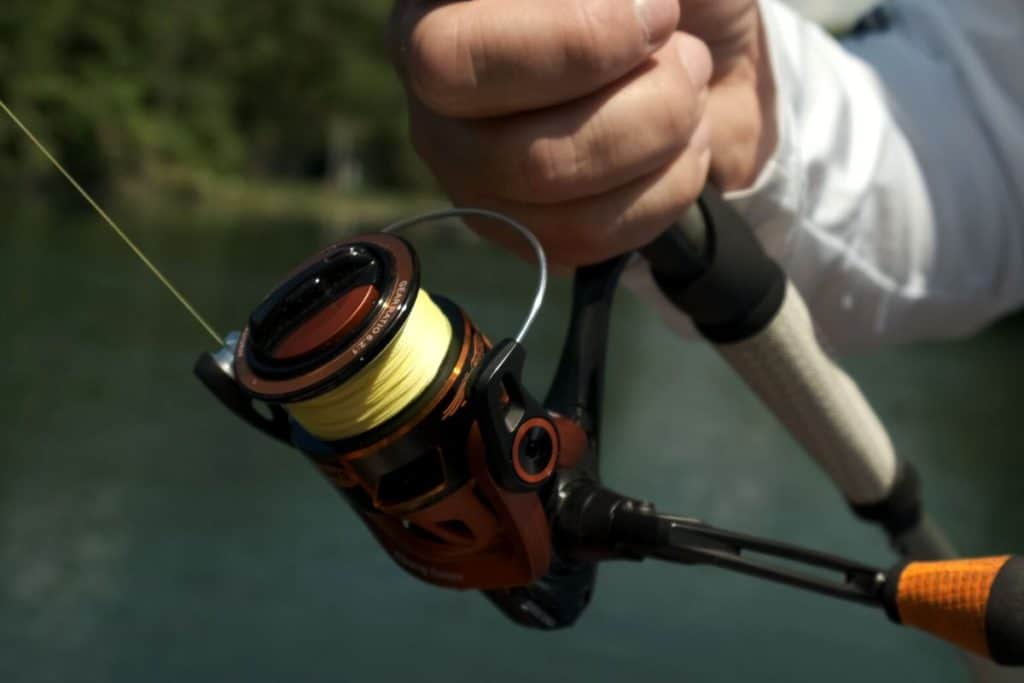
A key component to using braid on a spinning reel is the use of a leader material. Both monofilament and fluorocarbon work well for leaders. When the conditions dictate the use of finesse lures a low-vis leader can help with angler success.
(Here is an article on braided line and everything you need to know.)
The connecting knot is an important part of fishing with a braid mainline. I am a huge fan of the Red Phillips knot. It is fast to tie and easy to learn, but there are many good connecting knots an angler can use.
I can cast a Ned rig a considerable distance when using spinning gear with a braided mainline and fluorocarbon leader.
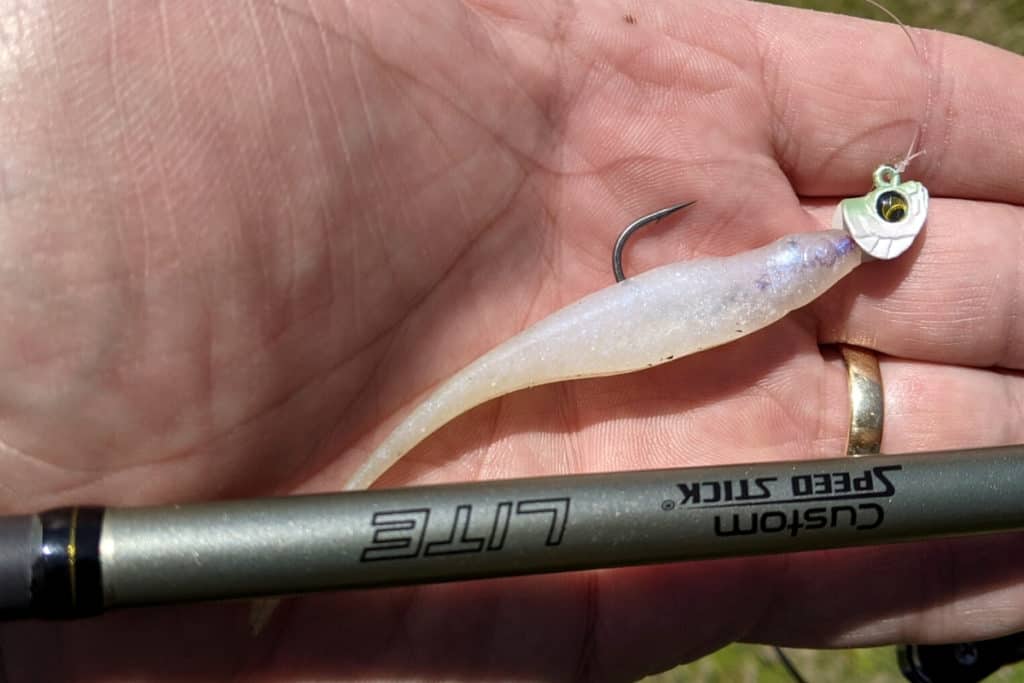
Choosing the Type of Finesse Lure for Casting Distance
There are hundreds of finesse lures on the market for anglers to choose from.
When it comes to ease of casting I like to focus on lures that are heavily salt-impregnated. Salt is dense and adds considerable weight to the plastisol.
When anglers can add a few more yards to their cast it will directly translate to more bites in difficult conditions. This is even more important when fishing in crystal clear water.
One of my favorite types of plastic to use on a shaky head presentation is a finesse worm made from Elaztech. The Strike King Super Finesse Worm is my go-to when using this powerful technique. The Elaztech is not as dense as traditional plastisol, therefore I will use a slightly heavier jighead.
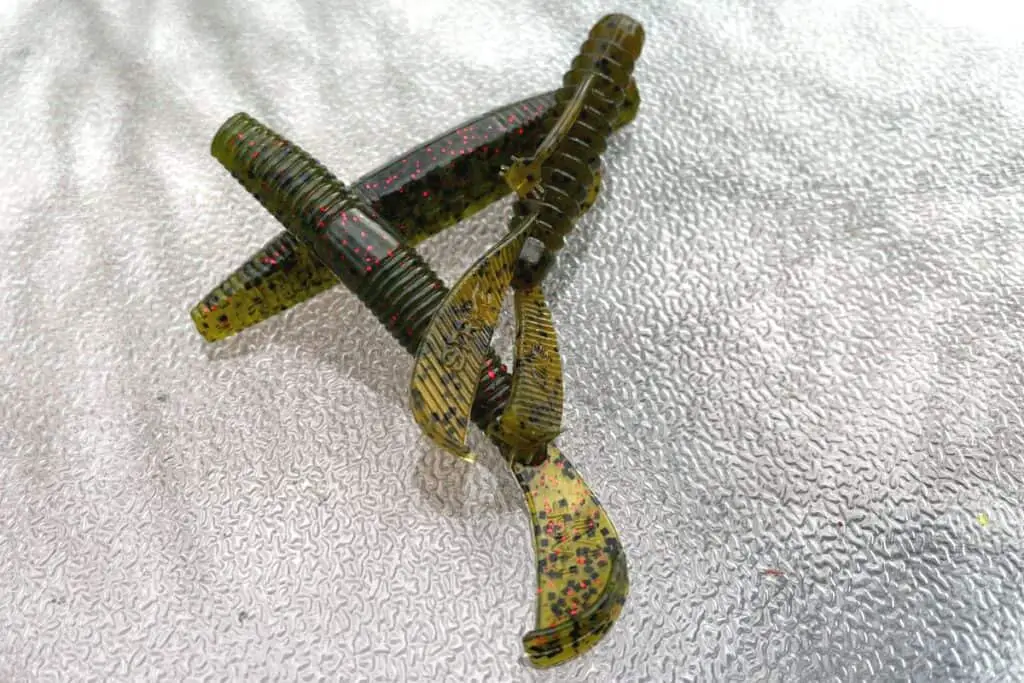
The Proper Casting Technique for Maximum Distance with Finesse Lures
The first consideration is the amount of line that you have between the lure and the rod tip before you start your cast.
Many anglers reel the lure up too close to the rod tip. This eliminates the maximum use of potential and kinetic energy. I will keep the lure about twelve inches from the end of the rod and then start my cast.
Make sure that on the backswing, the lure is extended all the way back before you bring the rod forward. This will eliminate the dreaded “snap” that can sometimes cause the lure to break off, and it will also allow for the most energy to build up.
If there is a slight wind, it can make casting finesse lures more challenging.
The best way to cast a lightweight lure into the wind is to keep it low to the surface of the water. A traditional overhand cast will launch the lure up into the air where it, along with the line, will catch the most resistance and keep your lure from traveling the desired distance.
An efficient roll cast and quick rotation of the wrist will keep the lightweight lure closer to the water. This keeps it from catching the wind.
This roll cast with finesse lures can take some practice, but it is a great way to utilize these powerful presentations when the breeze is fighting us.
Of course, anytime that you can cast with the wind it will naturally add a lot of distance.
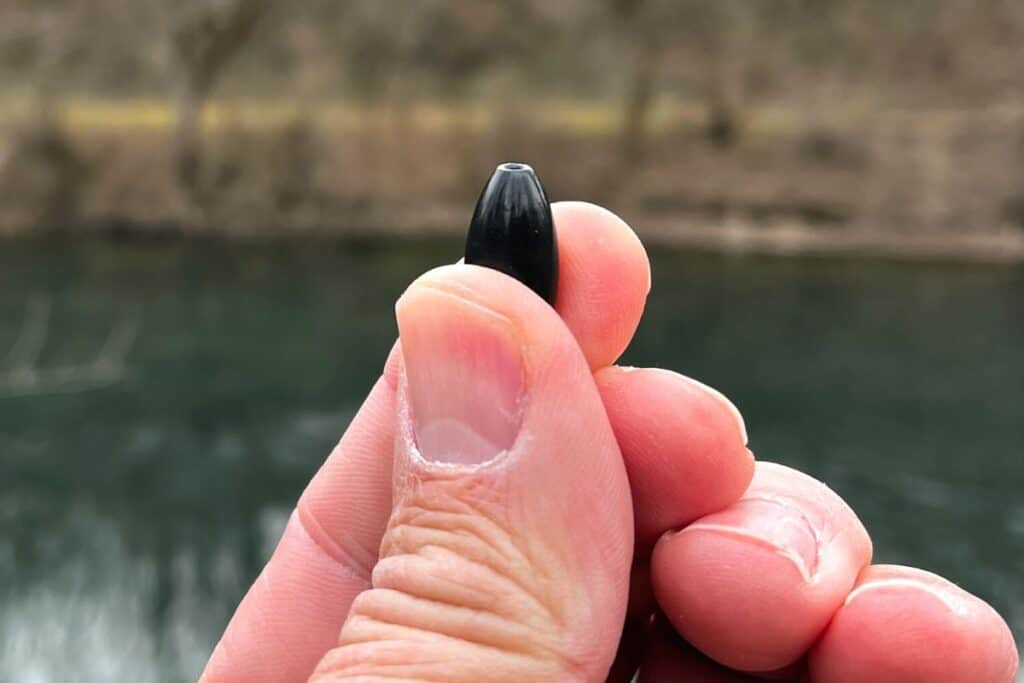
Tungsten Weights and the Benefits When Using Finesse Lures
Tungsten is an amazing metal. Yes, it is expensive, but it is denser than lead. In fact, it is approximately 1.7 times denser.
This means that terminal tackle manufacturers can create a jighead that is heavier but maintain a smaller profile.
When finesse fishing this is a win-win situation.
Tungsten, because of its density, also creates a different vibration pattern than a traditional lead jighead. If there is a lot of fishing pressure on your local water, this simple switch can mean more bites over the course of a day.
Bass become conditioned to repetitive stimulus and many anglers will still avoid tungsten because of the added cost. Unless, of course, you are in an area that has banned the use of traditional lead terminal tackle.
Good luck out there and be sure to encourage someone today. You never know how you may change their life forever.
Isaiah 6:8

